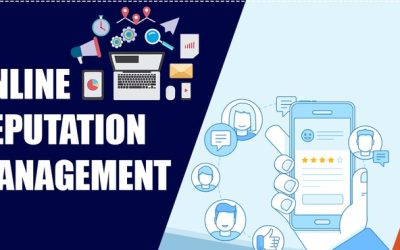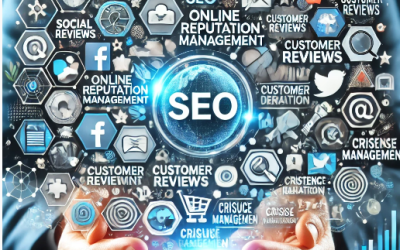The Silent Threat: Understanding and Confronting Online Harassment and Trolling
Nowadays, maintaining a secure online reputation has become more critical than ever before. With the rise of social media and online communities, individuals and organizations are increasingly susceptible to online harassment, trolling, and cyberbullying. These issues can tarnish reputations, damage personal and professional lives, and even lead to legal consequences. In this blog, we’ll explore the challenges posed by online harassment and trolling and discuss strategies employed by Online Reputation Management (ORM) professionals to protect and rebuild reputations.
The Dark Side of the Internet: Online Harassment and Trolling
Online harassment and trolling encompass a wide range of harmful behaviors, including cyberbullying, hate speech, doxxing (revealing personal information), and more. Victims can be individuals, businesses, or even public figures. The consequences of such attacks can be severe, affecting mental health, career prospects, and personal relationships.
Challenges in Combating Online Harassment
Dealing with online harassment and trolling presents unique challenges for individuals and organizations:
- Anonymity: Trolls often hide behind pseudonyms or anonymous accounts, making it difficult to identify and confront them.
- Virality: Harmful content can spread rapidly across the internet, causing extensive damage before it can be contained.
- Psychological Impact: Online harassment can take a toll on victims’ mental health, leading to stress, anxiety, and depression.
- Legal Complexities: Navigating the legal aspects of online harassment can be challenging, as laws vary from one jurisdiction to another.
- Persistent Nature: Once content is posted online, it may linger indefinitely, continuously affecting the victim’s reputation.
ORM Strategies to Combat Online Harassment
Online Reputation Management professionals employ several strategies to mitigate the impact of online harassment and trolling:
- Monitor Online Activity: Regularly monitoring online mentions and social media platforms can help identify potential threats early.
- Establish a Crisis Response Plan: Develop a comprehensive crisis response plan that outlines steps to take when facing online harassment. This plan should include legal consultation if necessary.
- Engage Positively: Responding to trolls and harassers with positivity and empathy can help defuse situations. Avoid engaging in arguments that can escalate the issue.
- Document Evidence: Collect evidence of harassment, including screenshots, timestamps, and URLs, which may be essential for legal action or reporting to platform administrators.
- Leverage Privacy Settings: Adjust social media privacy settings to limit exposure to potential harassers. This includes restricting who can send messages and comment on posts.
- Report Abuse: Use the reporting features provided by social media platforms to report abusive content and accounts. Encourage followers and supporters to do the same.
- Legal Action: If the harassment crosses legal boundaries, consult with legal experts and consider pursuing legal action against the harasser.
- Online Reputation Repair: In the aftermath of harassment, ORM professionals can employ various strategies to repair and rebuild a damaged online reputation. This may include promoting positive content, optimizing search engine results, and addressing misinformation.
Here are some queries related to online harassment, cyberbullying, and reputation damage:
Q1: What is online harassment and cyberbullying?
A1: Online harassment and cyberbullying involve the use of digital platforms to send threatening, harmful, or malicious messages or content to individuals or organizations, causing emotional distress or reputational harm.
Q2: How can online harassment and cyberbullying damage a person’s or organization’s reputation?
A2: Harassment and cyberbullying can lead to the spread of negative information or false rumors, tarnishing the target’s reputation. This can impact personal relationships, professional opportunities, and overall well-being.
Q3: What are some common forms of online harassment and cyberbullying?
A3: Common forms include hate speech, derogatory comments, doxxing (revealing personal information), spreading false rumors, creating fake accounts, and sharing inappropriate content.
Q4: What are the psychological effects of online harassment and cyberbullying?
A4: Victims may experience anxiety, depression, stress, and a diminished sense of self-worth. In severe cases, it can lead to long-term mental health issues.
Q5: How can individuals and organizations protect themselves from online harassment and cyberbullying?
A5: They can monitor online activity, adjust privacy settings, educate employees or followers, and establish a crisis response plan. Seeking professional help from Online Reputation Management (ORM) experts can also be invaluable.
Q6: Are there legal remedies for online harassment and cyberbullying?
A6: Yes, there are legal options available. Victims can pursue restraining orders, file complaints with law enforcement, and even consider civil lawsuits for defamation or harassment.
Q7: Can online harassment and cyberbullying be prevented entirely?
A7: While it’s challenging to entirely prevent such incidents, proactive measures like education, strict moderation, and reporting mechanisms can significantly reduce the likelihood and impact of online harassment.
Q8: How does online harassment affect an individual’s job or professional life?
A8: It can lead to job loss, hinder career advancement, and damage professional relationships. Employers may also be cautious about hiring individuals with a history of online harassment.
Q9: What role does Online Reputation Management (ORM) play in combating online harassment?
A9: ORM professionals employ strategies to monitor, respond to, and mitigate the impact of online harassment. They work to rebuild a positive online image and counteract the damage caused by negative content.
Q10: How long does it typically take to recover from the reputational damage caused by online harassment?
A10: The time required for recovery varies depending on the severity of the damage and the effectiveness of the ORM strategies employed. It can range from weeks to several months, and sometimes longer in complex cases.
Remember, if you or someone you know is experiencing online harassment or cyberbullying, it’s important to seek help from professionals, both in terms of legal advice and online reputation management.
Online harassment and trolling are pervasive issues in the digital world, posing significant threats to individuals and organizations alike. Online Reputation Management professionals play a crucial role in protecting and restoring reputations when faced with such challenges. By employing vigilant monitoring, crisis response planning, and effective engagement strategies, victims of online harassment can secure their online reputations and mitigate the damage caused by malicious actors.



